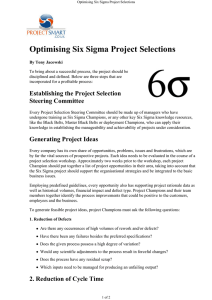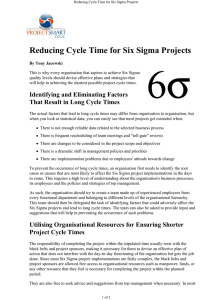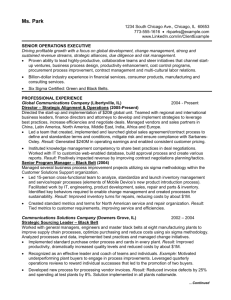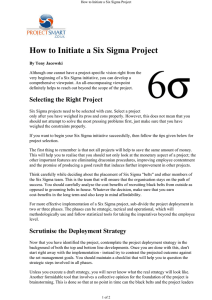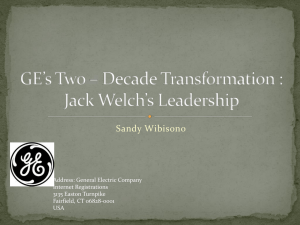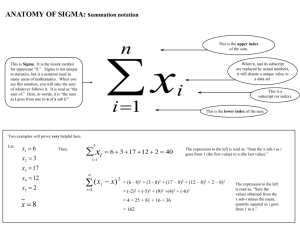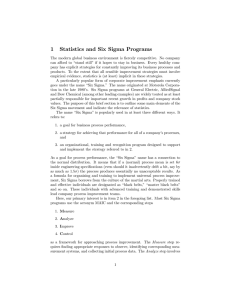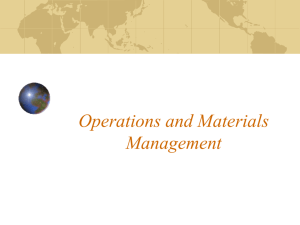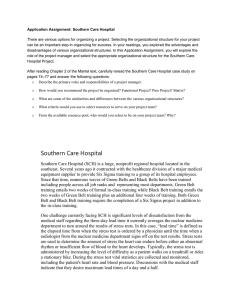qms1013ch5ppt (new window)
advertisement
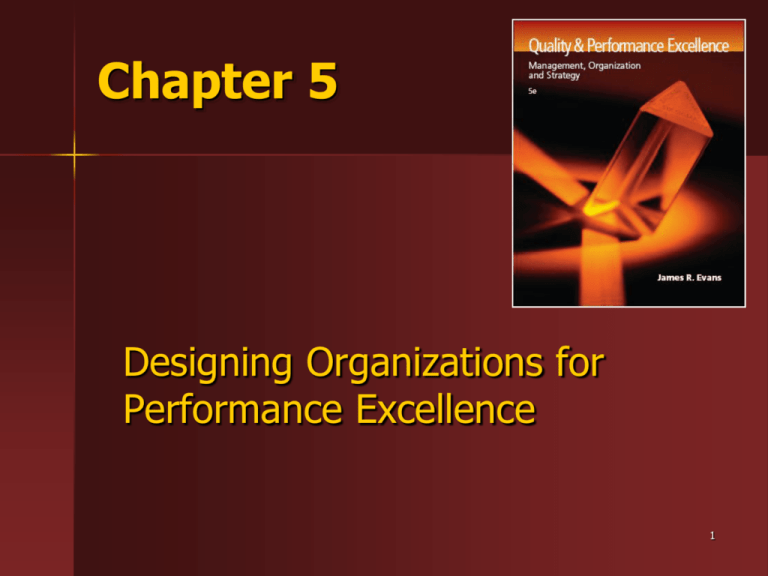
Chapter 5 Designing Organizations for Performance Excellence 1 Factors Affecting Work Organization Company and organizational guidelines Management style Customer influences Company size Diversity and complexity of product line Stability of the product line Financial stability Availability of personnel Functional Structure Problems With the Functional Structure Separates employees from customers Inhibits process improvement Functional organizations often have a separate function for quality Redesigning Organizations for Performance Excellence Focus on processes Make quality everyone’s job Recognize internal customers Create a team-based organization Reduce hierarchy Use steering committees Develop an agile organization Redesign work systems Types of Processes Value-creation processes – those most important to “running the business” – Design processes – activities that develop functional product specifications – Production/delivery processes – those that create or deliver products Support processes – those most important to an organization’s value creation processes, employees, and daily operations Example of Process Focus: Gold Star Chili Make Quality Everyone’s Job Recognize that all jobs involve “managing quality” Eliminate the quality department – Example: Texas Nameplate Company Recognize Internal Customers “Chains of customers” concept Process mapping to identify internal customer-supplier relationships Create links between internal customers and external suppliers Create a Team-Based Organization Six Sigma Project Teams Champions – senior managers who promote Six Sigma Master Black Belts – highly trained experts responsible for strategy, training, mentoring, deployment, and results. Black Belts – Experts who perform technical analyses Green Belts – functional employees trained in introductory Six Sigma tools Team Members – Employees who support specific projects Reduce Hierarchy Eliminate layers of middle management Empower frontline workers Benefits include improved communication Risks include impact on morale and loss of valuable experience Steering Committees Develop Agile Organizations Faster reaction to competitive challenges and changing customer demands Simplification of work processes and rapid changeovers Redesign Work Systems for High Performance Job descriptions Health and safety Suggestion systems Training and Education Flexibility Innovation Compensation and recognition Knowledge and skill sharing Empowerment Organizational alignment Customer focus Rapid response Employee Involvement Teamwork and Cooperation Enhancing Work Design Job enlargement – expanding workers’ jobs Job rotation – having workers learn several tasks and rotate among them Job enrichment – granting more authority, responsibility, and autonomy Case Studies Boeing Airlift and Tanker Programs VA Hospitals Solar Turbines, Inc. General Electric Bayamon The San Diego Zoo Comparisons to Organizational Theory Structural Contingency Theory – Mechanistic vs. organic – Choice depends on organizational environment and technology Institutional Theory – Structure legitimizes purpose, even if they may not provide value – ISO 9000 and Six Sigma


